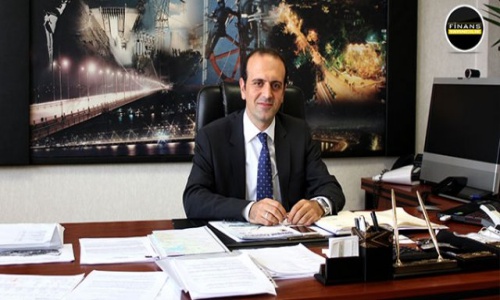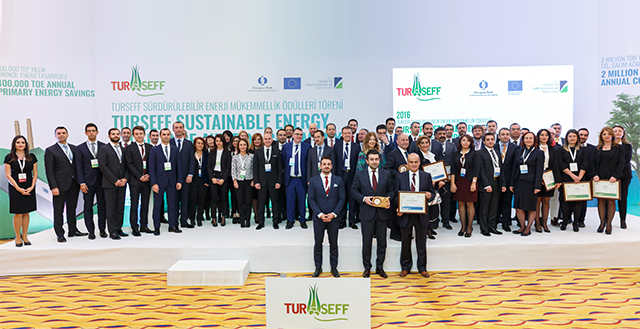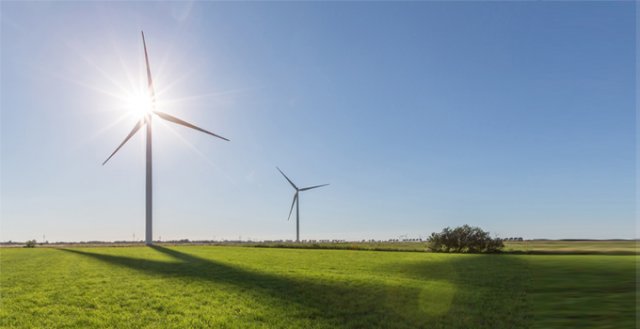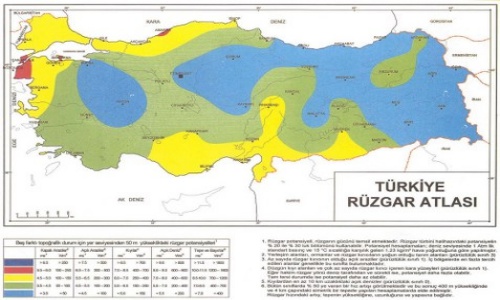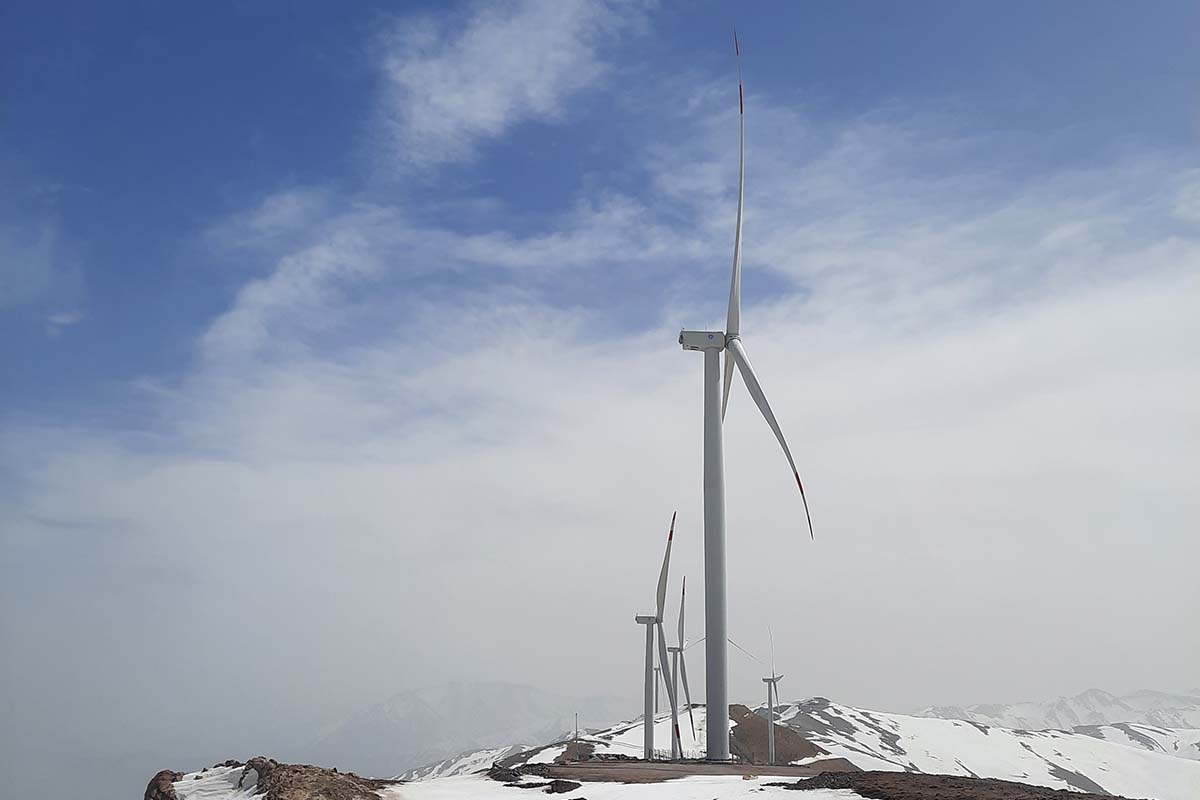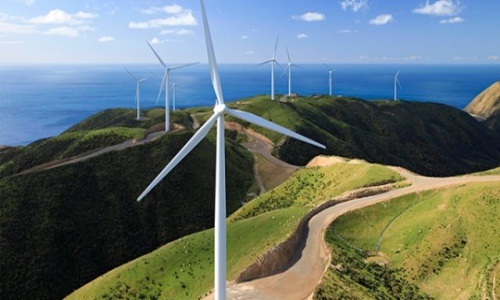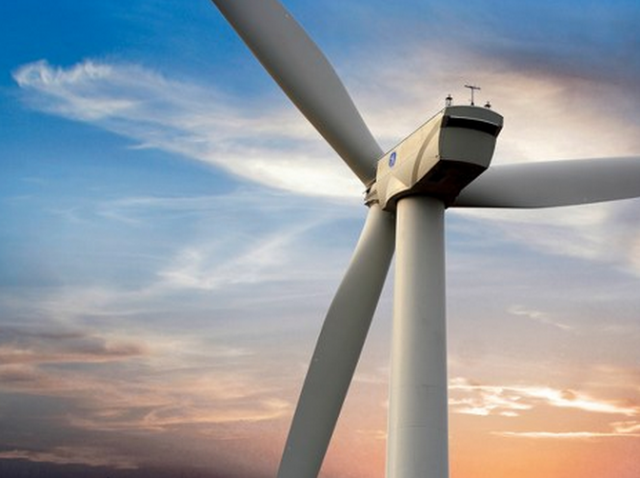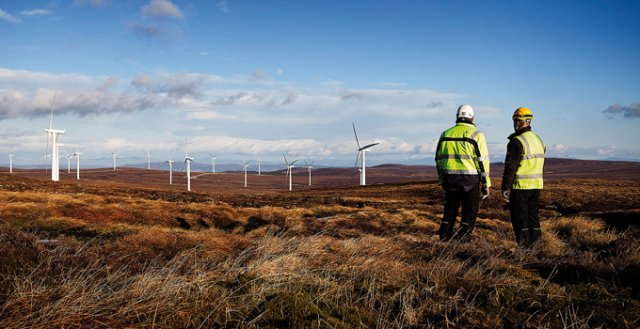Değerli okurlarımız TEİAŞ Planlama ve Stratejik Yönetim Dairesi Başkanı Sn. Ercüment Özdemirci ile içten bir sohbet gerçekleştirdik. Kendisi süreçlerden bahsetti ve sektörün daha iyiye gidebilmesi için önerilerini sundu.
Bizlere biraz kendinizden ve TEİAŞ’tan bahseder misiniz?
Önce kurumumdan bahsedeyim isterseniz, çünkü enerji sektörünün omurgası konumunda. Türkiye’de elektrik güç sisteminin işletilmesinden sorumluyuz. 53.000 km’nin üzerinde iletim hattına sahip. 400 kilovolt ve 154 kilovolt gerilim seviyesinde iletim hatları ve trafo merkezleri ile elektriğin kaliteli, güvenilir olarak tüm kullanıcılara, gerek tüketim yönünde, gerek üretim yönünde sunulması için görevli olan bir şirketiz.
Ben bu şirkette 1998 yılında göreve başladım. Gerek Yük Tevzi Dairesi’nde, gerek Planlama Dairesi’nde farklı kademelerde görev aldım. Son olarak Planlama Dairesi’nde Ar-Ge Müdürü olarak görev yapıyordum. Aralık 2014 tarihinden itibaren de Planlama ve Stratejik Yönetim Dairesi’nin Başkanlığını yürütüyorum. Dairemizin başlıca görevi Türkiye’deki elektrik sistemini planlamaktır. Özellikle son dönemde elektrik piyasasıyla birlikte, gerek yenilenebilir üretimde, gerek konvansiyonel santrallerde özel sektörün elektrik üretimine çok yoğun bir ilgisi var. Bunların sistem etütlerini yapıp, sistem bağlantı planlarını yapmak en temel görevlerimizden biridir. Bunun haricinde artan üretim ve tüketim doğrultusunda yeni trafo merkezlerini ve iletim hatlarının planlanması da yürüttüğümüz başlıca işler arasında.
Biliyorsunuz, hidrolik santraller ile başladı çalışmalarımız. Sonrasında rüzgar santralleri ile ilgili çalışmalar yoğunluk kazandı. Son dönemde de sektörün ilgi noktalarından biri güneş santralleri oldu.
24-30 Nisan 2015 tarihleri arasında EPDK’ya yapılan ön lisans başvurularının yarışma süreci hakkında bilgi verebilir misiniz? Ayrıca yeni bir kapasite mevcut. Bu konu hakkında neler söylemek istersiniz?
Süreç lisans yönetmeliğinin öngördüğü kurallar çerçevesinde ilerliyor. Biliyorsunuz temel kurgu; öncelikle TEİAŞ tarafından kapasitelerin belirlenmesi, sonrasında bu kapasiteler çerçevesinde proje geliştirecek şirketlerin uygun sahaları tespit etmesi ve bu uygun sahalarda ölçümlerini yaptıktan sonra da EPDK’ya müracaat etmeleri.
Biz Kasım 2013 tarihinde kapasiteleri açıkladık. Sonrasında da herkes üzerine düşen yükümlülükleri yerine getirdi. Nisan ayında da EPDK başvuruları aldı. Biz Nisan ayının son haftası gibi aynı zamanda yeni kapasiteleri yayınladık. Bu, sektör için son derece önemli. 3.000 megavatlık kapasite 2013 yılının Kasım ayında açıkladığımız kapasiteydi. Lisans yönetmeliği bize her yıl yeni kapasitelerin ilan edilmesi görevini vermiş. Bu görev çerçevesinde bu yıl Nisan ayı içerisinde ilave 2.000 megavatlık başvurular için yeni kapasite ilanında bulunduk. Bu da sektör için son derece önemlidir. Ben şundan dolayı önemli buluyorum: Sektörün bundan sonraki süreçte de lisans yönetmeliklerinin gereklilikleri çerçevesinde her yıl belirli orada kapasite ilan edileceğini görmesi mühim. Bu kadar yoğun ilginin olduğu bir sektörde şirketler yoğun bir rekabet içerisine giriyorlar ilave kapasite bu açıdan önemli.
Lisanssız rüzgar kapasitelerinde bir artış söz konusu olacak mı?
Lisanssız üretim, aslında daha çok güneş santralleri için uygun bir argüman. 1 megavata baktığımız zaman, güneş santralleri 50 megavat da kurulsa, aslında temelde panellerin birbiriyle irtibatlandırılması sonucu geliştirilebiliyor. Ama rüzgar santrallerinde bu geçerli değil. 1 megavatlık türbinler çok verimli olmayabiliyor.
Dolayısıyla başvurulara baktığımız zaman %90’ı güneş santrallerine ait. Rüzgar için çok yoğun bir ilgi yok çünkü yatırımcının lisanssız proje geliştirmesi şu anki mevzuat dahilinde çok kolay değil.
Peki sizin yatırımcılara önerileriniz var mı? Dikkat etmeleri gereken hususlar nelerdir?
Öneri deyince bizim aklımıza ilk etapta rüzgar ve güneş yarışmaları geliyor. Biliyorsunuz gerek rüzgar, gerek güneş yarışmalarında, yarışma sonuçlarında fizibilitesini kaybeden projeler ortaya çıkıyor. Daha önceki rüzgar yarışmaları biliyorsunuz ki kilovat saat başınaydı. 4 kuruşlar, 4.5 kuruşlar gibi yüksek rakamlar ortaya çıkmıştı. Şimdi yeni mevzuatta megavat başına bir bedel ortaya konuluyor. Güneş yarışmalarında megavat başına 3 Milyon’a yakın rakamlar ortaya çıktı. Bundan sonraki süreçte rüzgar yarışmalarında da benzer rakamların ortaya çıkması her ne kadar geliri elde eden bir kurum gibi görünsek de bizi TEİAŞ olarak sevindirmez. Çünkü biliyoruz ki bu kadar yüksek rakamların olduğu bir sektörde bu projeler artık yapılamaz hale gelebiliyor.
Müracaatları öncesinde mutlak suretle iyi ölçümler ve iyi analizler yapsınlar ve sonrasında da fizibıl projeleri fizibıl olmayan projeler hale getirebilecek bir yol izlemesinler. En büyük önerimiz bu.
Bundan sonraki süreçte de sistemin el verdiği ölçüde ilave kapasitelerin duyurulacağını, dolayısıyla sabırlı olup sağlam adımlar atmalarını öneririz.
TEİAŞ adına söylemek istediğiniz? Sizin eklemek istediğiniz başka bir şey var mı?
Sektör son dönem gördü ki TEİAŞ rüzgar santrallerinin önünü açma adına yapılması gereken her şeyi yapma çabası içerisinde. Bundan sonraki süreçte de TEİAŞ’ın genel tavrı bu şekilde olacaktır. Fakat diğer taraftan da sistem güvenliğini, sistem işletmeciliğini tehlikeye atmadan, tüm sistem kullanıcılarına güvenli elektrik sunma prensibi de bugüne kadar olduğu gibi devam edecektir.
Şunu biliyoruz ki rüzgar santralleri kontrol edilemeyen bir üretim karakterine sahip. Bugün bizim 20 gigavatlık bir kurulu gücümüz olduğu takdirde aslında karşımızda 0.1 gigavatla 14.1 gigavat arasında değişen bir üretim kapasitesi olacak. Mevcut rüzgar enerjisi santrallerinin karakteristiği de bunu gösteriyor. Yani 14 gigavat üretirken bunun 100 megavatlar seviyesine düştüğü takdirde bunu başka kaynaklardan mutlak suretle karşılamak zorundasınız.
Diğer taraftan rüzgar tahmin sistemleri sistem için çok çok önemli. Ne kadar iyi tahmin sisteminiz varsa, ne kadar az hata ile tahmin ederseniz o kadar fazla rüzgar santralini güvenli olarak işletebilirsiniz. Rüzgar İzleme ve Tahmin Merkezi’nin görevi son derece önemli. Bu sistemlerin genişletilmesi, yaygınlaştırılması, varsa eksikliklerinin giderilmesi gerekiyor. Bunlar yapıldığı takdirde rüzgarın toplam sistemdeki oranını arttırmak mümkün olabilecek.
Şunu da eklemek isterim. Belli bir dönemde rüzgar başvuruları alınıyor. Onun dışındaki dönemde ise kabul edilmiyor. Böyle bir yapı çeşitli yığılmalara neden olabiliyor. Dünyadaki örneklere baktığımızda rüzgar santrali lisans başvuruları diğer konvansiyonel santrallerde olduğu gibi yılın tüm zamanında açık. Bu yapıya bizim de geçmemiz için mutlak suretle çalışmalar yapılması gerekiyor.
Projelerin özellikle TEİAŞ’a gelmeden önce belirli aşamaları geçmiş olması gerekiyor. Bizlere daha realize edilmiş projeler gelirse bu projelerin hayata geçirilmesi daha kolay olur. Örnek olarak biz doğalgaz santrali başvurularını bugün almayalım, diyelim ki Temmuz 2016’da bir hafta süreyle başvuruları alalım, gerçek anlamda 20 GW başvuru olacaksa, 80 GW başvuru olur. Sanal başvurular da olur yani. Rüzgar santralleri projelerinin önündeki en büyük engel budur. Bunun da kurumlar ve sektör ile gerekli koordinasyon sağlanarak çözülmesi gerekiyor.
Hazırlayan
Murat ER
Yazı İşleri Müdürü
Editörin Chief
İNGİLİZCESİ;
“TEİAŞ is in the Struggle for Doing Anything Necessary in order to Pave the Way for the Wind Plants”
Dear readers, we have made an interview with Mr. Ercüment Özdemirci, the Head of the Department of TEİAŞ Planning and Strategic Management. He talked about the processes and offered his suggestion for the development of the industry.
Could you please tell us about yourself and TEİAŞ?
First I shall talk about my institution if you please, because it is in the position of a backbone for the energy industry. We are responsible for the operation of electrical power system. It has a transmission line above 53.000km. We are a company in charge of offering electricity for every user in a high-quality and reliable way both in terms of consumption and production through the transmission lines and substations of 400 kilovolts and 154 kilovolts.
I started to work in this company in 1998. I took charge in different levels from Load Dispatching to Planning Departments. Lastly I was working as the R&D Manager in the Planning Department. As of December 2014, I have been working as the Head of the Department of Planning and Strategic Management. The primary duty of our department is to plan the electricity system in Turkey. Particularly recently with the electricity market there is an intense interest by the private sector in electricity production in both the renewable production and conventional plants. Surveying the systems and planning the system connections are among our main duties. Apart from that, in line with the increasing production and consumption, planning of the new substations and transmission lines are among the duties that we fulfil.
You know, our works began with the hydroelectric power plants. Then works regarding wind power plans gained intensity. And recently one of the points of attention of the industry has become the solar plants.
Could you inform us on the competition process of the pre-licence applications received by EMRA between April 24 and 30, 2015? Besides, there is a new capacity available. What would you like to say about this?
The process progresses within the framework of the rules anticipated by the licencing regulation. You know, the basic construct is as follows; first the determination of the capacities by TEİAŞ, identification if the appropriate fields by the companies which will develop projects within the framework of these capacities and their application to EMRA after carrying out measurements on those appropriate fields.
We announced the capacities in November 2013. Afterwards everybody did his part. In April EMRA received the applications. In the last week of April we published the new capacities at the same time. This is very important for the sector. The 3.000-megawatt capacity was the one we revealed in November 2013. The licencing regulation has assigned us the duty of announcing the new capacities. Within the framework of this duty we made announcements of new capacities for the additional 2.000-megawatt applications in April this year. This is also extremely important for the industry. I find this important because it is considerable for the sector to anticipate that in the following period capacities of certain rates will be announced every year within the framework of the obligations of licencing regulations. In such an industry that there is great attention the companies engage in an intense competition. This is why the additional capacity matters.
Will there be an increase in the unlicensed wind capacities?
Unlicensed production is in fact an argument more appropriate for the solar plants. Considering 1 megawatt, though the solar plants are installed in 50 megawatts, they in fact can be developed as a result of the contact of the panels with each other. However, this is not valid for the wind plants. The tribunes of 1 megawatt may not be so productive.
Therefore, when considering the applications, 90% of them belong to solar plants. There is no such interest in wind because within the current legislation it is not that easy for the investor to develop a project without licence.
Have you got any suggestions for the investors? What are the points to take into consideration?
What comes to our mind first while speaking of suggestions is the wind and solar competitions. You know that both in wind and solar competitions some projects losing their feasibilities as the result of the competitions are revealed. The previous wind competitions, you know, used to be per kilowatt/hour. High figures such as 4 kurus, 4.5 kurus came to the light. Now in the new legislation a price per megawatt is brought forward. In the solar competitions there were numbers close to 3 million. In the next period the appearance of similar numbers in wind competition, though we seem to be a company gaining income, it will not please us as TEİAŞ. Because we know that in a sector where there are such high numbers these projects may become impracticable.
Before the applications they should absolutely carry out good measurements and analyses and then should not follow a way that can make feasible projects unfeasible. This is our greatest suggestion.
From now on there will be additional capacity announcements so far as the system allows, so we suggest them to be patient and take firm steps.
Are there any words that you would like to say on behalf of TEİAŞ or to add?
The industry has witnessed recently that TEİAŞ is in the struggle for doing anything necessary in order to pave the way for the wind plants. In the following period the general attitude of TEİAŞ will be like that. But on the other hand, its principle of offering reliable electricity for all the system users without endangering the system safety and the system management will proceed in the same way as it has been up to the present day.
We know that wind plants have a production character which is incontrollable. In the event that we have an installed power of 20 gigawatt today, there will be a production capacity in front of us, which will vary between 0.1 and 14.1 gigawatt. This is what the characteristics of the existing wind power plants demonstrate. That is to say, in case that it falls down to the level of 100 megawatt while producing 14 gigawatt, you should definitely compensate this by another resource.
On the other hand, wind forecast systems are very important for the system. The better forecast system you have, the fewer mistakes you have in forecasting, the more wind plants you can operate in a safe way. The duty of Wind Monitoring and Forecast Centre is of vital importance. These systems need to be extended, spread and their deficiencies, if any, should be corrected. If these are fulfilled, it will be possible to increase the rate of the wind within the total system.
I would like to add this too: Wind applications are received in a certain period. They are not accepted except for this duration. Such a structure may cause various accumulations. When we consider the examples across the world, the licence applications for wind plants are open any time during the year as in the other conventional plants. For us to shift to that kind of structure some works should absolutely be carried out.
The projects need to go through certain phases particularly before arriving TEİAŞ. If we receive more realized projects, it will be easier for those projects to be put into practice. For example, let us not receive the applications for natural gas plants today, instead accept them during a week in July 2016. If it is supposed to be 20-GW applications, it will increase up to 80-GW. There will also be electronic applications in other words. I think this is the greatest obstacle for the wind plant projects. This should be resolved by providing the required coordination between the institutions and the industry.





